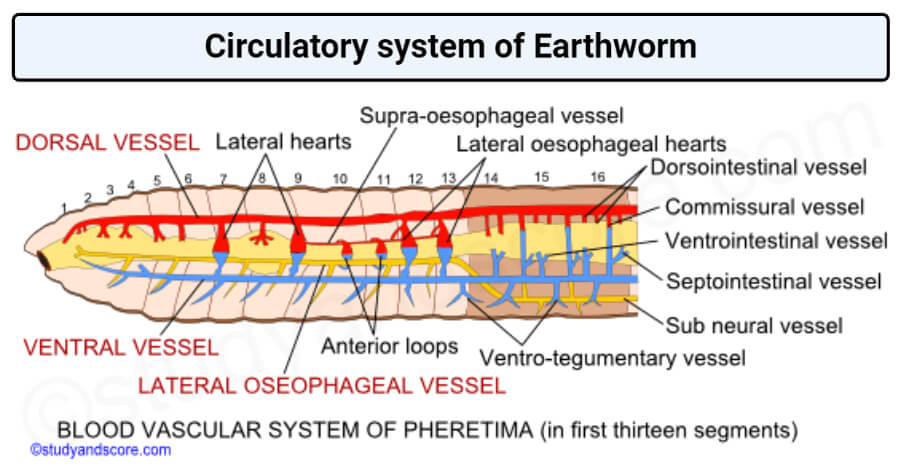1- (d) Lymph is a clear yellowish, slightly alkaline, coagulable fluid containing white blood cells in a liquid resembling blood plasma. It is composed of fluid matrix, plasma, white blood corpuscles or leucocytes.
2- (d) Neutrophils are a type of leucocyte (WBCs) that can take all types of stain (acid-basic-Neutral). It is most abundant (60 –70% of total WBCs) and most active type of WBCs i.e., they are the most actively phagocytic in nature.18 min video on complete WBC below
- Open type blood vascular system is a type of circulatory system in which nutrients and waste are moved through the body with the help of a fluid which flows freely through the body cavity, rather than being contained in veins. Many invertebrates like insects (eg, cockroach) and shellfish have an open circulatory system, with the exact composition of the circulating fluid varying, depending on the animal species involved.
- The earthworm has a closed circulatory system.

- Insects have open type circulatory system.
- Amphibians and lizards have incomple double closed system.
All of theseReason: (i) Without any external stimuli, the nodal musculature has the ability to generate action potential. It is auto excitable.
(ii) Sinoatrial node (SA node) – pacemaker, which lies in the wall of right atrium near the opening of superior vena cava. The SA node is a mass of neuromuscular tissue.
(iii) Another mass of neuromuscular tissue, the atrioventricular node (AV node) is situated in the wall of the right atrium. The AV node picks up the wave of contraction propagated by SA node.
(iv) The AV node picks up the wave of contraction propagated by SA node. A mass of specialized fibers, the bundle of his, originates from the AV node. The bundle of his divides into two branches, one going to each ventricle.
(v) When the wave of contraction originating from the sinoatrial node reaches the atrioventricular node (AV node – pace setter), the latter is stimulated and excitatory impulses are rapidly transmitted from it to all parts of the ventricles to contract simultaneously. The ventricles force blood through long system of arteries and hence must exert great pressure on the blood.
Reason: (i) Without any external stimuli, the nodal musculature has the ability to generate action potential. It is auto excitable.
(ii) Sinoatrial node (SA node) – pacemaker, which lies in the wall of right atrium near the opening of superior vena cava. The SA node is a mass of neuromuscular tissue.
(iii) Another mass of neuromuscular tissue, the atrioventricular node (AV node) is situated in the wall of the right atrium. The AV node picks up the wave of contraction propagated by SA node.
(iv) The AV node picks up the wave of contraction propagated by SA node. A mass of specialized fibers, the bundle of his, originates from the AV node. The bundle of his divides into two branches, one going to each ventricle.
(v) When the wave of contraction originating from the sinoatrial node reaches the atrioventricular node (AV node – pace setter), the latter is stimulated and excitatory impulses are rapidly transmitted from it to all parts of the ventricles to contract simultaneously. The ventricles force blood through long system of arteries and hence must exert great pressure on the blood.


